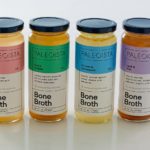What Exactly is PGPR?
A client asked me the other day if chocolate was an acceptable part of a True Paleo approach. It certainly is! If we choose a variety that is at least 85% (I recommend 100%) and ideally raw and fair trade, it can be healthy, as well as sustainable something special after a meal now and again. It’s quite decadent and so much so that just a square or two does the trick in terms of making one feel satiated and far from how they’d feel if they were following a ‘diet’ in traditional terms. Then she asked if the Hershey Special Dark type would fit the bill. I had a quick peak online to check and found the following list of ingredients: SUGAR; CHOCOLATE; COCOA BUTTER; COCOA PROCESSED WITH ALKALI; MILK FAT; LACTOSE (MILK); SOY LECITHIN; PGPR, EMULSIFIER; VANILLIN, ARTIFICIAL FLAVOR; MILK Clearly, it’s not the best choice but I wanted to know was, what is PGPR? That was a new one for me. A little more searching and I found, thanks to Wikipedia:
- “Also known as E476, PGPR is an emulsifier made in a three step process[2] from glycerol and fatty acids (usually castor bean derived), respectively. PGPR reduces the viscosity of chocolate and similar coatings and compounds. It works by decreasing the friction between the particles of cacao, sugar, milk, etc. present so they can flow more easily when melted.
- PGPR is a yellowish, viscous liquid composed of polyglycerol esters of polycondensed fatty acids from castor oil. It may also be polyglycerol esters of dimerized fatty acids of soybean oil.
- PGPR is strongly lipophilic, soluble in fats and oils and insoluble in water and ethyl alcohol. In chocolates, it is used as a viscosity-reducing agent.[3] It is virtually always paired with lecithin or another plastic viscosity-reducing agent.
- It can also be used as an emulsifier in spreads and in salad dressings or as a crystal inhibitor and anticlouding agent in fractionated vegetable oils.
- Overall, it did not constitute a human health hazard.
So what was used before the invention of this product? Cocoa butter. Why not just use cocoa butter, then, which we can all identify as a food? You guessed it… the good old dollar bill. “PGPR can be used to replace the traditional but more expensive cocoa butter as an ingredient in chocolate. Palsgaard’s website asserts that cocoa butter is an expensive raw material for chocolate manufacturers. By using PALSGAARD 4150 the chocolate recipe has lower costs in terms of less cocoa butter but also gives the benefit of having less fat.” I’d rather pay a little more for a chocolate that’s come from a place of purity and that also supports local economy; so may types are now available which fit this bill, so there’s not much reason to default to the Hershey approach. Anyway, it’s not exactly something we’re meant to be eating in large quantities anyway, so a little will truly go a long way.





